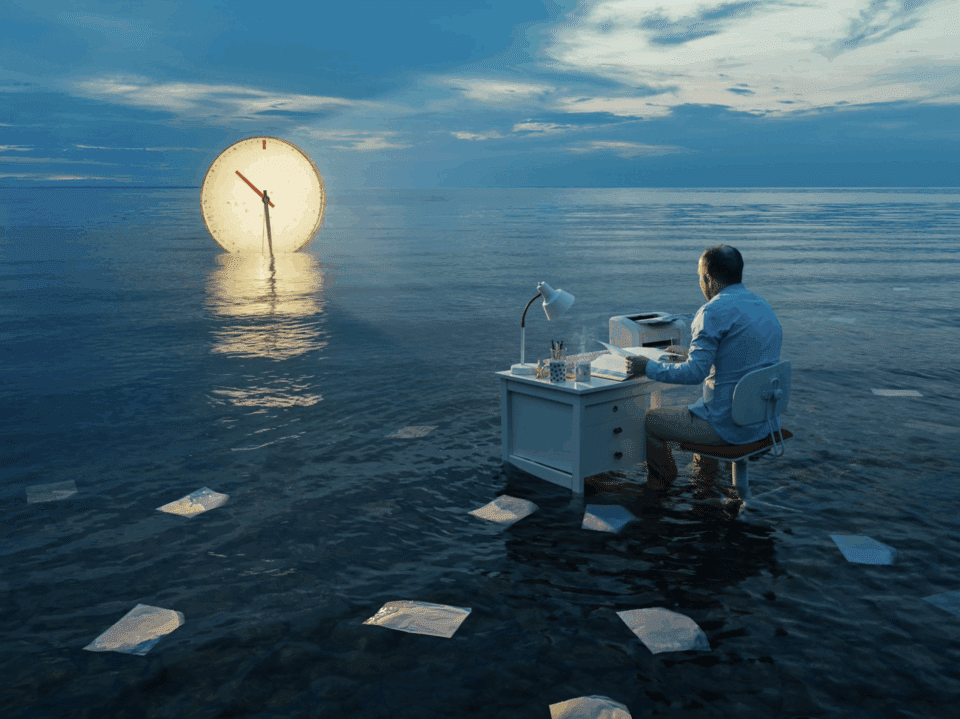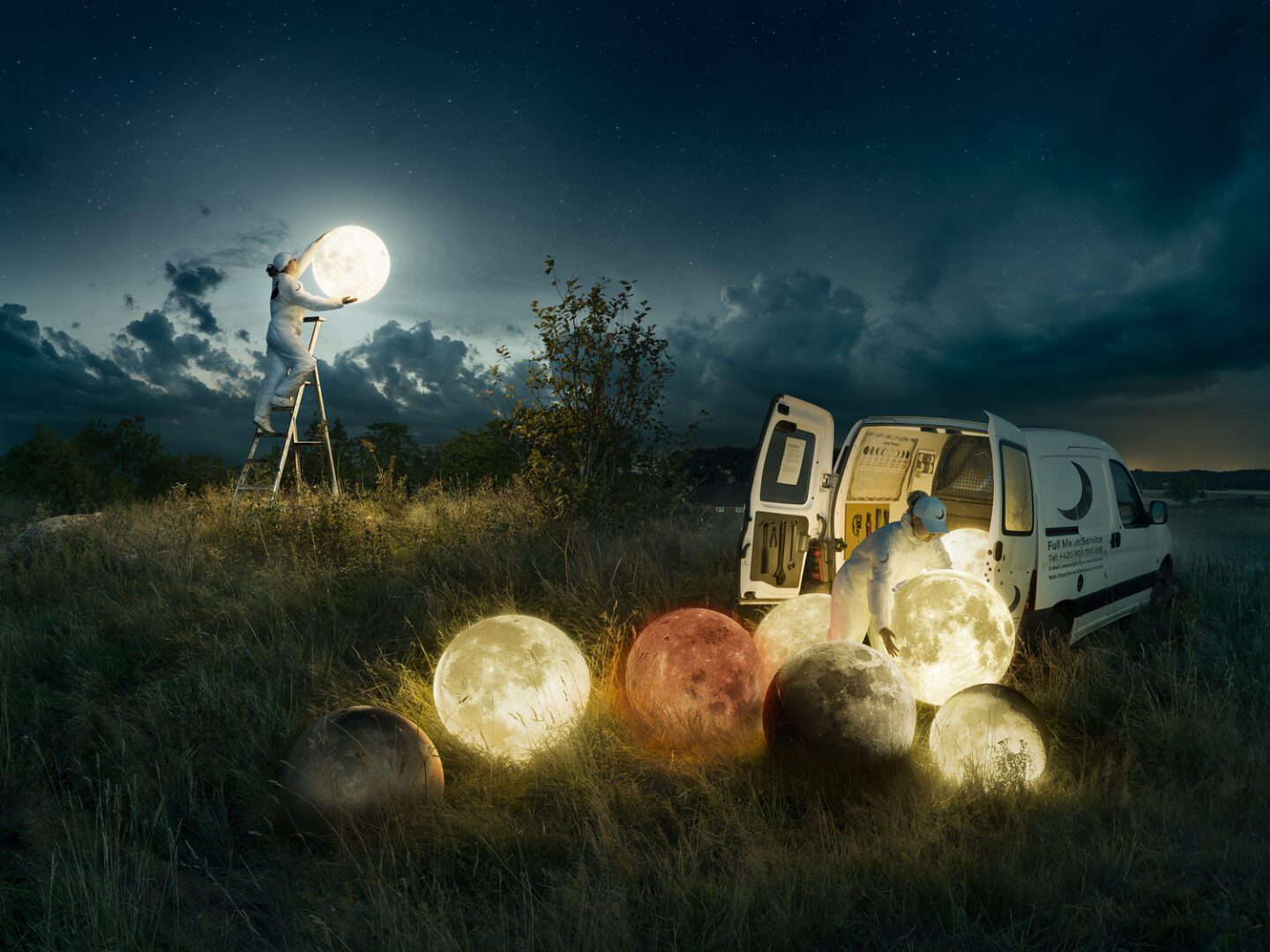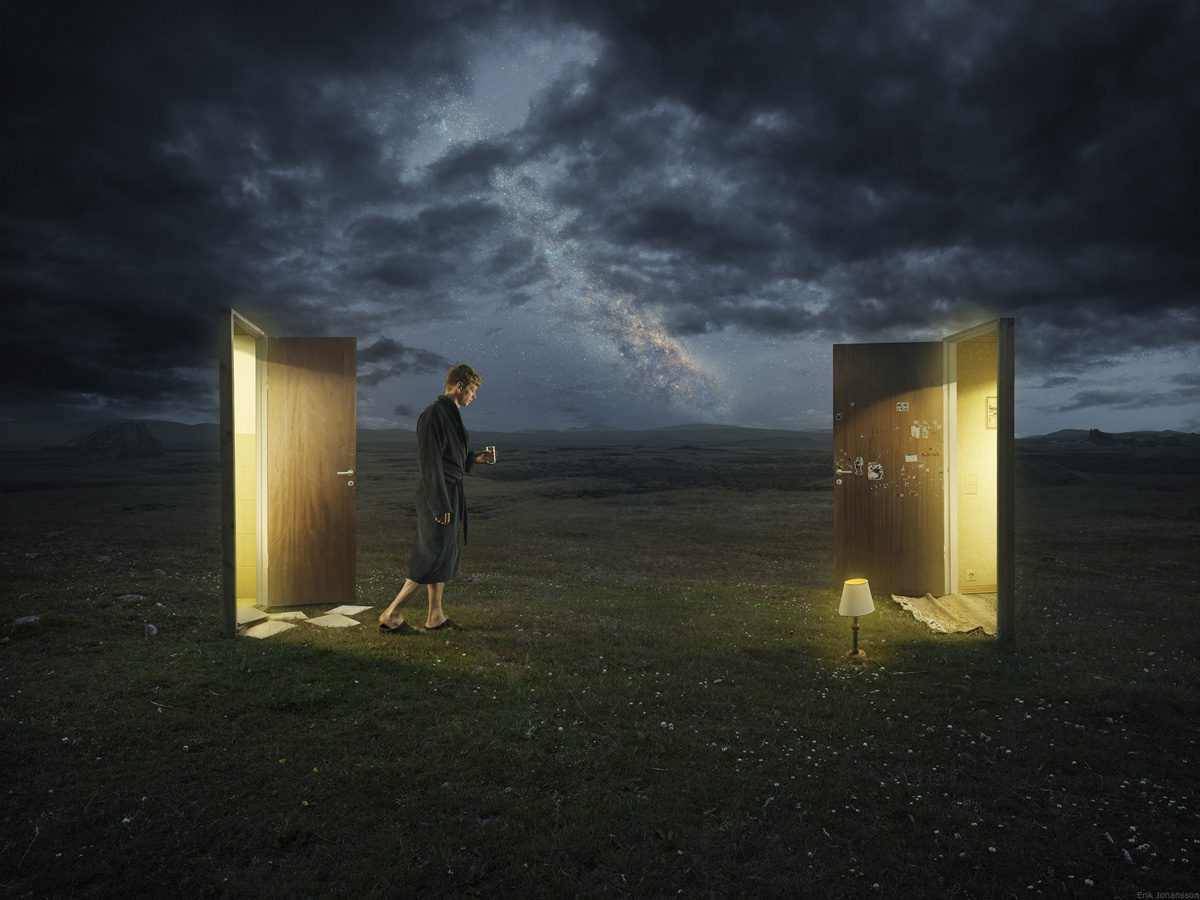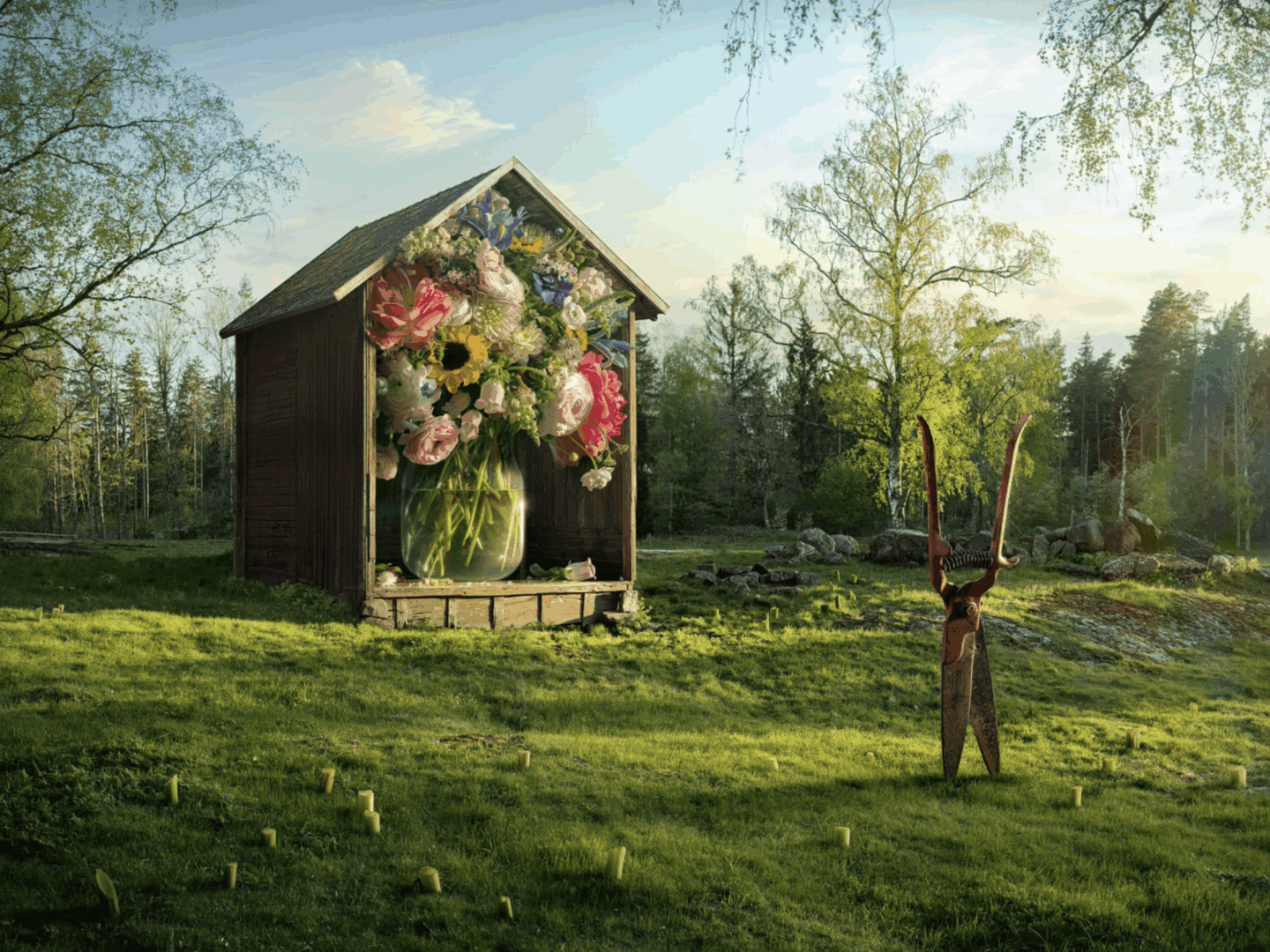There are approximately 34 million AI generated images created each day. These pictures make up 71% of social media feeds. Digitally generated content is now part of normal life, and anything can be conjured up in a split second. Erik Johansson’s (b. 1985) surreal scenes buck this trend. The Swedish photographer only creates around 10 images a year, pouring hours into the planning, capturing and editing of a single shot. The artist creates his works on-site, using props and carefully arranged light and perspective. These mesmerising landscapes see familiar scenes bleed into dreamlike situations. In Deadline (2023), an office worker sits at his desk, which is partially submerged in the ocean, as papers float around him and a moon-like clock glows in the distance. Another image shows an oversized vase of flowers bursting from a shed, whilst a pair of shears stands to attention next to the short stalks left behind. Now, the artist has turned his attention to a new project: opening a gallery. The Svanstorp Art Center, which opened on 3 May, is based at Johansson’s childhood home and will bring international art to the local community. It hosts a permanent exhibition of his work, as well as seasonal shows from fellow creatives. Aesthetica spoke to the artist about this venture, why he wanted to take on the project and how his artistic practice continues to evolve.

A: Take us back to where it all began. How did you start working behind the lens?
EJ: I grew up on a farm in Sweden, surrounded by open landscapes and a lot of time to dream. I started taking photos as a teenager, more out of curiosity than anything else. Pretty soon I realised that I wasn’t so interested in capturing reality – I wanted to create my own version of it. That led me into photo manipulation, and from there it just kept evolving. Photography and photo manipulation has always gone hand in hand for me and feels like a natural way for me to express myself.
A: Your photographs often evoke a sense of wonder, as if they are part of a larger, unexplained narrative. Do you see yourself as a storyteller?
EJ: Yes, storytelling is a big part of it. But I try not to be too specific. I like leaving space for interpretation for viewers to create their own story within the frame. I think that makes the work more engaging and personal. It’s less about conveying a single message, and more about creating a world that invites you in. The goal is always to make the impossible look believable. I work with real elements, photographed in the right light, at the right angle and put them together in a way that tricks the eye. It’s a constant balance between technical precision and letting the imagination run free.

A: You create elaborate physical sets and props for your photographs. Could you talk about the significance of physically building your vision rather than relying on digital effects and AI?
EJ: For me, building things physically adds a layer of realism that you can’t fake. The textures, the lighting, the imperfections all make the image feel more tangible. Also, it’s just more fun to work that way. I like the process of creating something with my hands, not just sitting in front of a screen. Authenticity matters – it’s important that what you see in the final image is rooted in something real even if the final composition is surreal. With AI, you can type in a prompt and get a result instantly. My process is the opposite: it’s slow, manual, and deeply personal. I want the viewer to feel that.

A: Your own art gallery, Svenstorp Art Center, opened in Sweden on 3 May. Tell us about how this project came about?
EJ: It’s been a dream for a long time. The center is located on my family’s farm in Sweden, where I grew up. I wanted to create a place for creativity and imagination, not just for my own work, but for others too. It’s a mix of gallery, café, and cultural space, built together with my partner who’s an architect. I hope they’ll feel inspired. That it becomes a place where people can slow down, reflect, and maybe see the world a bit differently. Art can do that. I also want it to feel welcoming, somewhere you can just have a coffee, enjoy the atmosphere and be part of something creative.

A: You produce a limited number of works each year, with a focus on quality over quantity. How does this approach shape your artistic practice?
EJ: It gives me the freedom to dive deep into each idea. I don’t want to repeat myself or create just for the sake of output. Each image is like a small world that takes time to build. Working slowly keeps it meaningful and hopefully that shows in the result. There is no lack of ideas and I have a lot of new projects coming up.
A: Who, or what, are your biggest inspirations?
EJ: A mix of things. Nature, especially the Swedish landscape. Surrealist painters like Salvador Dalí and René Magritte. But also everyday life’s small details that trigger an idea. I’m inspired by the feeling of dreaming, and how we perceive reality.
A: What’s next for you? Anything we can look forward to?
EJ: Right now, the focus is on the opening of Svenstorp Art Center and my new projects that I want to shoot this summer.
svenstorpartcenter.com | erikjo.com
Words: Erik Johansson & Emma Jacob
Image credits:
Decoration © Erik Johansson.
Between the Shadows © Erik Johansson.
Deadline © Erik Johansson.
Full Moon Service © Erik Johansson.
Dreamwalking © Erik Johansson.





